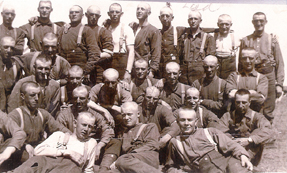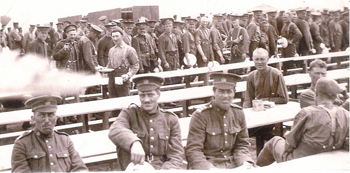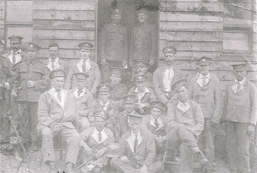Home
IN REMEMBRANCE OF
Sgt. William Carl Ploethner
1891 - 1918
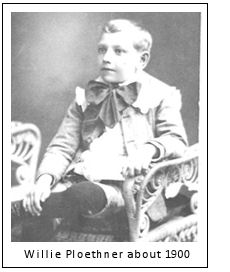 William Carl Ploethner was born in Normanby Township, Grey County, Ontario on January 17, 1891 to Oscar Louis Ploethner and Friederica Weiser. His parents were residing at Lot 28, Concession 6, Normanby Township (map) where they pursued farming. He was the second son born to this couple. His older brother, August Ploethner, had died one year earlier at the age of two months and 27 days (death record).
William Carl Ploethner was born in Normanby Township, Grey County, Ontario on January 17, 1891 to Oscar Louis Ploethner and Friederica Weiser. His parents were residing at Lot 28, Concession 6, Normanby Township (map) where they pursued farming. He was the second son born to this couple. His older brother, August Ploethner, had died one year earlier at the age of two months and 27 days (death record).
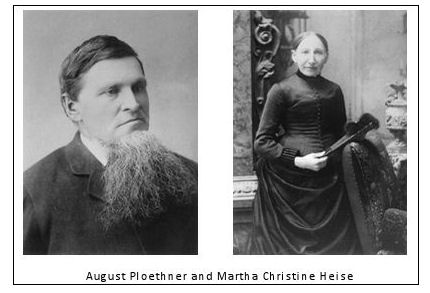 William was the second Canadian born generation. His paternal grandparents, August Ploethner and Martha Christine Heise had come to Canada from Germany in about 1850 and 1852 respectively and settled in Waterloo County, Ontario where they married on May 12, 1856. In an account of Martha's family history, it is indicated that, prior to their immigration, she and August were engaged to marry. August Ploethner was an established weaver in Preston, Ontario by the time Martha boarded the Hamburg-New York steamship line on August 15, 1852. Martha set up a millinery business at the front of his shop. August Ploethner, became a well known artisan in Preston and his works remain on display in museums today. The couple had eight children, four of whom lived to adulthood.
William was the second Canadian born generation. His paternal grandparents, August Ploethner and Martha Christine Heise had come to Canada from Germany in about 1850 and 1852 respectively and settled in Waterloo County, Ontario where they married on May 12, 1856. In an account of Martha's family history, it is indicated that, prior to their immigration, she and August were engaged to marry. August Ploethner was an established weaver in Preston, Ontario by the time Martha boarded the Hamburg-New York steamship line on August 15, 1852. Martha set up a millinery business at the front of his shop. August Ploethner, became a well known artisan in Preston and his works remain on display in museums today. The couple had eight children, four of whom lived to adulthood.
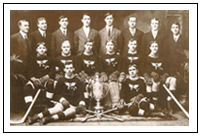 William Carl Ploethner was raised in Preston, Ontario by his grandmother, Martha (Heise) Ploethner who was widowed in 1900. It appears that William enjoyed a comfortable and secure childhood and was well provided for. He was an atheletic child and a player on the winning team of the 1910-1911 Ontario Intermediate Hockey Championships. When his grandmother died in 1916, he lived with his aunt Matilda Sohrt until he moved Saskatchewan. Here in Moose Jaw he married Mary Josephine Howard, age 22, in 1916.
William Carl Ploethner was raised in Preston, Ontario by his grandmother, Martha (Heise) Ploethner who was widowed in 1900. It appears that William enjoyed a comfortable and secure childhood and was well provided for. He was an atheletic child and a player on the winning team of the 1910-1911 Ontario Intermediate Hockey Championships. When his grandmother died in 1916, he lived with his aunt Matilda Sohrt until he moved Saskatchewan. Here in Moose Jaw he married Mary Josephine Howard, age 22, in 1916.
William was recruited for military service in 1915. He was assigned regiment #781703 and joined the Canadian Infantry (Alberta Regiment) 50th Battalion. At that time his occupation is listed as farmer. On December 13, 1916, William was sent overseas to front line combat in France. While he was overseas, his daughter Helen was born on February 21, 1917. William wrote several letters to his baby daughter in Saskatchewan. The proud father would never meet his daughter.
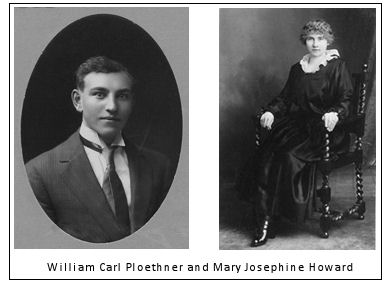 |
|
From France March 28, 1917, William wrote the following letter to his newborn daughter:
To Baby Ploethner, Moosejaw, Saskatchewan
My dear little daughter,
Your mama has just informed me about your arrival. Your are certainly a very welcome addition to our family. Be a good little girl and don't give mamma too much trouble. I hope, babe, you have the best of health and will continue to do so and may God bless both you and your dear mother is my sincere wish. My wish is that I'd love to be at Moosejaw and see you. Goodbye, babe, from your loving Daddy. |
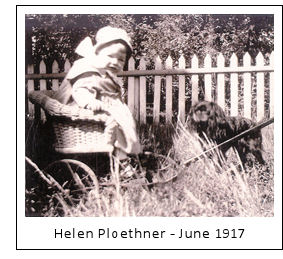 In a second letter to baby Helen, her father wrote: In a second letter to baby Helen, her father wrote:
To Babe from Daddy
My dear little daughter. Just a few lines to let you know I'm thinking of you and your dear mother always. I hope you are well and pray that you will grow up a nice strong baby. Your daddy is so pleased about you and I hope I will soon be able to be back with you to help your mother carry you about. Mother won't be lonesome now since your arrival.
I'm anxiously looking forward to a snap shot of you. Well, Bye Bye darling.
May God watch over you and your dear mother is my prayer every day.
Bye By from your daddy.
|
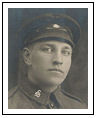 Sgt. Ploethner was injured in combat in June of 1917 at Lens and sent to hospital in England to recuperate. He fully recovered and was set to return to battle on June 22, 1918. On June 20, 1918, while riding a bicycle, William Ploethner was involved in a fatal collision with a motor vehicle at the Eamont Bridge. Sgt. Ploethner's death was reported in his home town of Preston by the Prestonian on June 27, 1918 (newspaper clipping). In Europe, his death was reported in great detail and his funeral attended by thousands of people. Notice of his death was sent to his young widow by the Chaplain of the CFC on June 24, 1918.
Sgt. Ploethner was injured in combat in June of 1917 at Lens and sent to hospital in England to recuperate. He fully recovered and was set to return to battle on June 22, 1918. On June 20, 1918, while riding a bicycle, William Ploethner was involved in a fatal collision with a motor vehicle at the Eamont Bridge. Sgt. Ploethner's death was reported in his home town of Preston by the Prestonian on June 27, 1918 (newspaper clipping). In Europe, his death was reported in great detail and his funeral attended by thousands of people. Notice of his death was sent to his young widow by the Chaplain of the CFC on June 24, 1918.
Related newspaper clippings:
CANADIAN KILLED NEAR PENRITH
SHOCKING ACCIDENT AT EAMONT BRIDGE
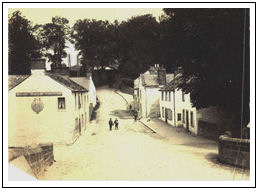 Source: The MidCumberland and North Westmorland Herald June 22nd, 1918
Source: The MidCumberland and North Westmorland Herald June 22nd, 1918
Inquest Last Night
On Thursday night a shocking tragedy occurred at Eamont Bridge, Penrith resulting in the death of a young Canadian soldier from the Cliburn Camp, Sergt. Wm. Ploethner. The deceased was proceeding to Cliburn on a bicycle from the direction of Skirsgill, and when he came on to the main road at Eamont Bridge collided with a motor car travelling in the direction of Penrith and driven by Mr. Wm. F. Wood, Stanwix, Carlisle, who was accompanied by Mr. Hewson, veterinary surgeon, Carlisle. The young soldier was dragged along the road for about 15 yards, and was fatally injured. Lieut. Glanfield and Adjutant to the Canadians at the Beaconwas near the scene of the accident, and had Dr. Ward sent for. Later Sergt. Ploethner was removed in the ambulance by Messrs. J.M. Kirkpatrick and Robson to the Cottage Hospital, but death took place before reaching there. The funeral will be at Penrith Cemetery on Monday afternoon. More.../
------------------------------------------------------------------------------------------
THE FATALITY TO A CANADIAN AT PENRITH
Source: The Mid Cumberland and North Westmorland Herald June 29th, 1918
Imposing Military Funeral
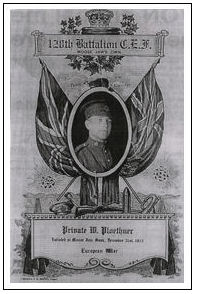 The interment of the young Canadian, Sergt. Wm. Ploethner, of the Canadian Forestry Corps, who as we reported last week was killed at Eamont Bridge through colliding with a motor car, was the most imposing funeral seen in Penrith for many years, it being carried out with full military honours in Penrith Cemetery on Sunday afternoon. The impressive ceremonial was sympathetically witnessed by some thousands of people from the town and district. The solemn and stately music of the “Dead march” in “Saul” played by a military band is always impressive and this, taken in conjunction, with the deep sympathy which the young Canadian’s untimely and evoked, made up an affecting ritual. More.../
The interment of the young Canadian, Sergt. Wm. Ploethner, of the Canadian Forestry Corps, who as we reported last week was killed at Eamont Bridge through colliding with a motor car, was the most imposing funeral seen in Penrith for many years, it being carried out with full military honours in Penrith Cemetery on Sunday afternoon. The impressive ceremonial was sympathetically witnessed by some thousands of people from the town and district. The solemn and stately music of the “Dead march” in “Saul” played by a military band is always impressive and this, taken in conjunction, with the deep sympathy which the young Canadian’s untimely and evoked, made up an affecting ritual. More.../
------------------------------------------------------------------------------------------
FRENCH-CANADIAN SOLDIER KILLED
FATAL COLLISION AT EAMONT BRIDGE
A REMARKABLE SUNDAY FUNERAL
The shocking death of one of the members of the Canadian Forestry Corps, stationed at Cliburn Camp, who was killed in a collision between the cycle he was riding and a motor car, on Thursday night, formed the subject of an inquest at Penrith Police Station on Friday evening, before Mr. F.W. Soal and a jury of which Mr. F.T. Kenyon was foreman. The deceased was Sergeant Wm. Ploethner, a French-Canadian, aged 26 years. A few minutes before ten o’clock on Thursday night he was cycling along the lane which connects Skirsgill road with Eamont Bridge. At the Penrith side of the bridge the lane enters the main road at right angles, the junction being a very dangerous one, as on the main road there are steep hills on both sides – Kemplay and the bridge. As the sergeant was leaving the lane, a motor car, owned by Mr. Hewson, veterinary surgeon, Carlisle, and driven by Mr. W.F. Wood approached from the south. Deceased appears to have seen it as he was about to turn, and it is surmised that to try and avoid it he guided his machine to the left, in the direction of Penrith instead of towards the bridge, which would have been the nearer way for him to get to the camp. In any case the car and the bicycle came into violent contact to such an extent that the unfortunate soldier was carried a good many yards in the direction of Penrith.
More.../
------------------------------------------------------------------------------------------
REMARKABLE SCENE AT PENRITH
Source: Penrith Observer dated June 25th, 1918
The funeral at Penrith Cemetery on Sunday afternoon provided one of the most remarkable scenes witnessed at Penrith for many years. Sergt. Ploethner was well known and very popular in the town, and this , combined with the tragic circumstances of his death, sufficed to begin a wave of sympathy which came to a head in the neighbourhood of the Cemetery in the assembly of thousands of people. It is against the local rules to have Sunday funerals, but an exception was made in this case on account of the Canadians, who did not want to sacrifice Monday from work. The internment was accompanied by military honours, and long before the procession was due to start the Beacon road was crowded with people. It had been decided, wisely in the circumstances, not to admit the public to the Cemetery, and the regular police had the assistance of a band of specials and Canadians from the Beacon, to keep the people to the side of the road nearest the town. . The body had been taken during the forenoon from the Cottage Hospital to the Drill Hall, and it was from the latter place that the procession started.
More.../
------------------------------------------------------------------------------------------

Military Funeral At Penrith
On Tuesday, for the second time in ten days, the soldiers of the Canadian Forestry Corps stationed at Penrith and Cliburn assembled at the Penrith Cemetery to pay their last tribute of respect to a dead comrade and on this occasion the remains of Private W. Van Vlack, of the Cliburn Company were interred alongside those of Sergt. Ploethner, who was killed a fortnight ago.
Private Van Vlack, who was only 19 years of age, came from Picton, Ontario. More.../
------------------------------------------------------------------------------------------
Letter to the Editor – Newspaper and date of printing unknown
The Fatality at Eamont Bridge
Sir, - The accident at Eamont Bridge appears to warrant an opinion of the bridge in question by one who has used it hundreds of times in the last eight years, and, with all due deference to the judgement of others, I consider that there is no more dangerous place on the main roads of the two counties and the bridge must go at the earliest possible moment that such work can again be taken in hand. There are five certain points which make for bad accidents every day the bridge is in use; (1 and 2) From neither approach can one yard of the road beyond the summit be seen when 40 yards distance from the latter; (3) the bridge is very narrow; (4) the worst feature is the end of the Skirgill road, (which has proved itself in the present catastrophe); and (5) the impetus given to any wheeled vehicle, (when travelling from Penrith), by Kempley Brow, this having regard more particularly to point No. 4. More.../
 William Carl Ploethner was born in Normanby Township, Grey County, Ontario on January 17, 1891 to Oscar Louis Ploethner and Friederica Weiser. His parents were residing at Lot 28, Concession 6, Normanby Township (map) where they pursued farming. He was the second son born to this couple. His older brother, August Ploethner, had died one year earlier at the age of two months and 27 days (death record).
William Carl Ploethner was born in Normanby Township, Grey County, Ontario on January 17, 1891 to Oscar Louis Ploethner and Friederica Weiser. His parents were residing at Lot 28, Concession 6, Normanby Township (map) where they pursued farming. He was the second son born to this couple. His older brother, August Ploethner, had died one year earlier at the age of two months and 27 days (death record).







